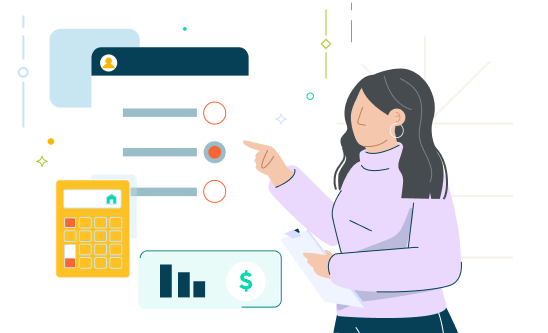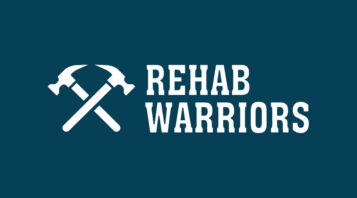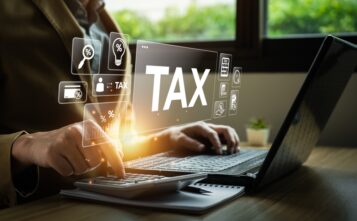
Self-employed people may need a personal loan now and then, just like everyone else. The trouble is that when you don’t get a W-2 every year or have access to pay stubs, proving your income can be tricky.
Most people who apply for personal loans only have to submit a few copies of recent pay stubs. Some only have to provide the name of their employer for the lender to verify the person’s income and employment history with the employer’s system. If you’re not anyone’s employee, lenders suddenly need much more proof that your income is what you say it is.
Be ready to submit several years’ worth of documentation, usually in the form of tax and/or bank records.
Tax Returns
Stability is a concern for lenders, so last year’s tax return isn’t going to be enough to get a personal loan when self-employed. Prepare to send in at least two years’ worth of returns, complete with all documents and forms that relate to your income and its sources.
Schedule C
Sole proprietors will probably need to provide copies of the Schedule C forms. Schedule C tells your lender what your profit or loss has been for the years in question. From that, the lender will be able to determine how much you’re taking home.
Schedule SE
Schedule SE tells lenders that you’ve been paying Social Security and Medicare taxes on your self-employment income. If lenders see gaps in your tax payments on your income, they may see you as a higher risk.
1099-MISC
If you’re a contractor or service provider, you receive 1099-MISC forms from everyone who pays you more than $600 in a given tax year. This form will help lenders to determine the stability of your income from different sources if you’re self-employed but need a personal loan.
The 1099-MISC can be useful to you as the applicant if you have a few “anchor” clients who provide you with the bulk of your income consistently. Even though other sources of income may be less reliable, your 1099s from these anchor clients can show predictable revenue.
Tax Transcripts
If you don’t have your tax returns, you can request a tax transcript from the IRS. There are several types of transcripts available for you to order, including:
- Tax Return Transcript: Most line items and forms for the current tax year and up to three years prior
- Tax Account Transcript: Basic data including taxable income and adjusted gross income, available up to 10 years back
- Record of Account Transcript: A combined tax return and tax account transcript for up to three years before the current year
- Wage and Income Transcript: Data from sources like forms 1099, 1098, and 5498
Transcripts also show changes made after you filed the return in question. This can help if the changes were in your favor.
Bank Statement
Your lender may ask for a bank statement as part of your proof of income. This is particularly likely if the lender wants to verify your deposits from particular clients. Be ready to send personal and/or business statements on request, perhaps for the past two years or more.
Profit and Loss Statement
When you’re self-employed and need a personal loan, some lenders may want you to submit a profit and loss statement independent of your Schedule C, if only to verify your income report across several sources.
Credit Report
To get a personal loan while self-employed, you’ll probably have to let your lender access your credit report and credit score. Different lenders will have different required scores, but the bare minimum tends to be around 550 to 580. Your prospects will be better if your credit score is at least 600, and they’ll get even better the higher your score gets.
As with most loans, a higher credit score usually means a more attractive interest rate and more lenders to choose from. It may be the difference between whether you get approved or not, especially when you’re self-employed and lenders are inclined to question whether your income is stable.
What Else Might Help?
When you can afford a loan but your documentation doesn’t show it, consider adding something extra to your application, such as collateral or a co-signer.
Collateral
Personal loans are usually unsecured, meaning that no collateral is necessary. However, if your income is sporadic or you haven’t been self-employed for long enough when getting the personal loan, you may have a better chance of approval with collateral.
Collateral is an asset that you offer as security to a lender. If you default on the loan, the lender can take possession of the collateral to make up for the loss. The type of collateral you put up will depend on the size of the personal loan. The closer the value of the collateral is to the value of the loan, the better.
A Co-Signer
If you’re on the borderline of qualifying for a personal loan while self-employed, a co-signer can help a lender feel more confident. A co-signer is a person who will apply for the loan with you. They take on the responsibility of paying the loan back if you don’t.
Choose a co-signer who is well-qualified for the loan. Ask someone who has a good to excellent credit score, ideally 700 or higher. They should have a stable income, preferably not from self-employment, and be able to afford payments on the loan easily.
Your co-signer should have a low debt-to-income ratio (DTI). When they sign the loan, they’re officially taking on the debt with you, and that will increase their DTI. If it brings the DTI above 43%, they might have difficulty qualifying for credit if they need it.
Alternatives to a Personal Loan
Finding loans for the self-employed isn’t the easiest task. There are many personal loan documents required for self-employed borrowers, and sometimes even those aren’t enough. You know your income is reliable, but the paperwork doesn’t show it, at least not from the bank’s perspective. You can scramble for approval, or you could think of alternative ways to get cash. You can search for a flexible lender that offers no stated income personal loans.
If you’re a homeowner, consider using your equity. You used to have to borrow against it, perhaps with a home equity line of credit or cash-out refinance. That’s not the case anymore, thanks to sale-leaseback solutions.
Through a sale-leaseback arrangement, you sell your home, converting your home equity to cash. You then stay in the home as a renter until you’re ready to repurchase your home or relocate.
A sale-leaseback isn’t a loan, so you don’t have to submit any loan documentation. As long as you have enough equity in your home, you’re golden. If you are an independent contractor, read our article about ways to get loans for independent contractors.
Key Takeaways
If you’re struggling to qualify for a personal loan or are wondering what personal loan documents are required for the self-employed, talk to a financial expert to learn more about your options.



















